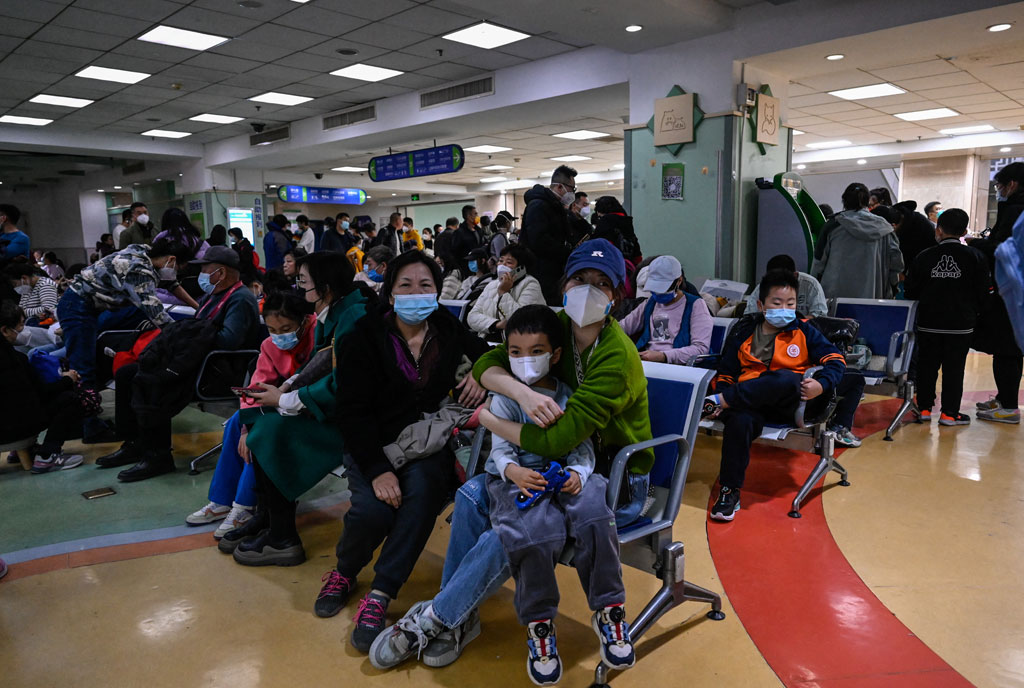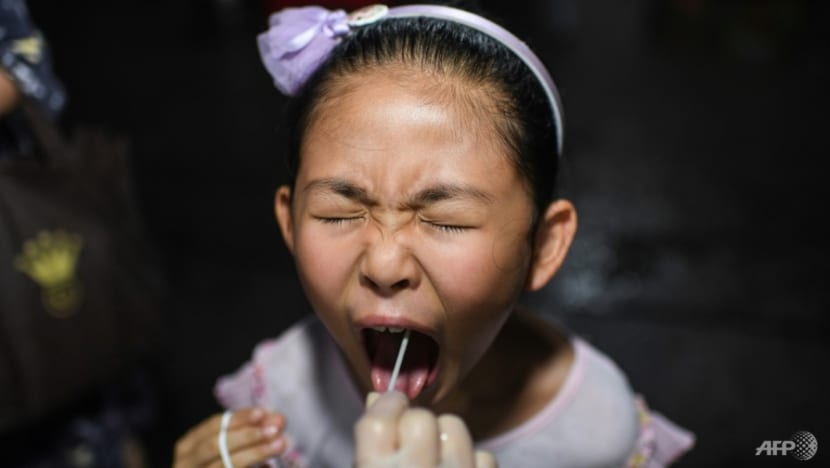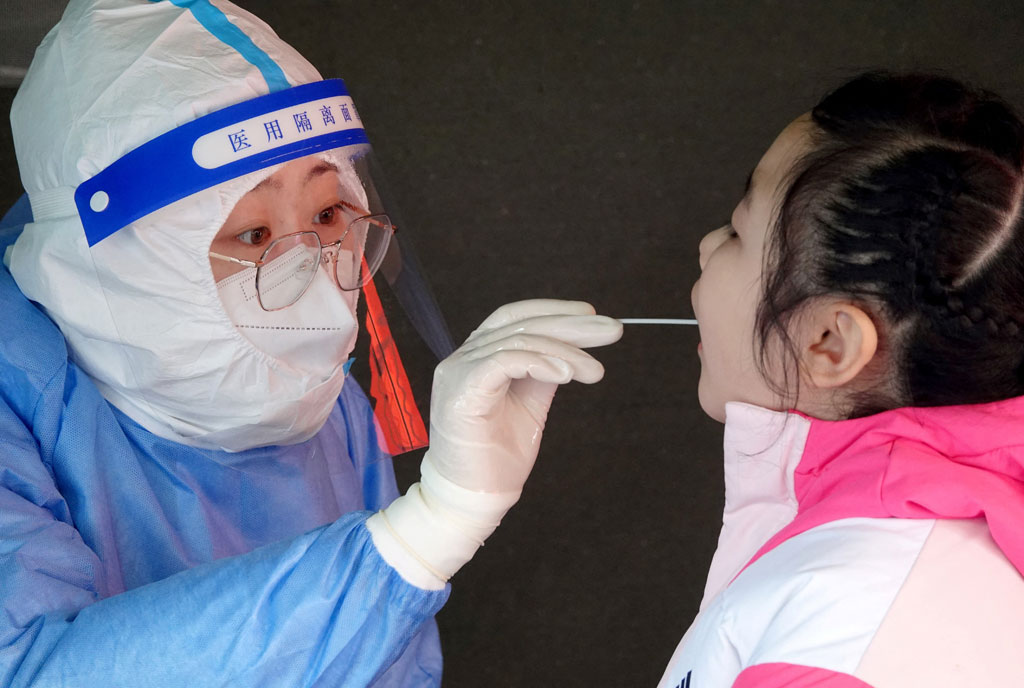Scientists urge caution as WHO probes China

Children and their guardians wait at an outpatient area at a hospital in Beijin mid-November 2023 following influx in respiratory illnesses. PHOTO/AFP
What you need to know:
- Countries have been put on alert following the increase in cases of respiratory diseases, especially among children in China.
Leading scientists in the country have urged caution as the World Health Organisation (WHO) continues with investigations into the surge “above usual levels” in the respiratory illnesses among children in China.
“We should be careful,” Prof Sarah Kiguli, a paediatrician at Makerere University Medical School, told this publication on Friday afternoon, adding that information about the illness is still scanty.
“These infections come, epidemics are there, you don’t know whether it is a new one, so I think the wise thing is to be careful. Prevention measures such as masks and hand washing, those measures that we went through during the Covid time [can safeguard one from the infection],” she advised.
The WHO said in a statement on Thursday that since mid-October, they have been monitoring data from Chinese surveillance systems that have been “showing an increase in respiratory illness in children in northern China.”
The global health agency said that on November 22 it identified media and surveillance reports about clusters of undiagnosed pneumonia in children’s hospitals in Beijing, Liaoning, and other places in China.
Following this, WHO said through the International Health Regulations mechanism, it made an official request to China to provide additional epidemiologic and clinical information, as well as laboratory results from these reported cases and data about recent trends in circulating respiratory pathogens.
Lightning strikes twice?
This is coming amid questions which both China and the WHO faced about the transparency of reporting on the earliest Covid-19 cases that emerged in 2019 in Wuhan, a Chinese city. Countries were eventually buffeted by the Covid-19 pandemic, which devastated livelihood, killed many people and slowed down economic growth.
However, the WHO noted, China’s National Health Commission had earlier, at a press conference on November 13, also reported on a nationwide increase in the incidence of respiratory diseases, predominantly affecting children.
“Chinese authorities attributed this increase to lifting of Covid-19 restrictions and the arrival of the cold season, and due to circulating known pathogens such as influenza, Mycoplasma pneumoniae, respiratory syncytial virus (RSV), and severe acute respiratory syndrome coronavirus 2 (SARS-CoV-2 [Covid-19]). Mycoplasma pneumonia and Respiratory Syncytial Virus are known to affect children more than adults,” the WHO disclosed in its statement.
The organisation said it held a teleconference with Chinese health authorities from the Chinese Center for Disease Control and Prevention and the Beijing Children’s Hospital. The call was facilitated by the National Health Commission and the National Administration of Disease Control and Prevention. The requested data was provided during the engagement, and it indicated an increase in outpatient consultations and hospital admissions of children due to Mycoplasma pneumoniae pneumonia since May, and RSV, adenovirus and influenza virus since October.
“Some of these increases are earlier in the season than historically experienced, but not unexpected given the lifting of Covid-19 restrictions, as similarly experienced in other countries. No changes in the disease presentation were reported by the Chinese health authorities,” the WHO noted.
Scanty information
Following the lifting of the lockdown in Uganda, this year around April and May, there were reports about a surge in flu-like illnesses which some believed was a Covid-19 resurgence. However, the Health ministry said the wave was caused by the influenza virus.
Assessment of China’s situation
WHO, in their assessment said; “there is limited detailed information available to fully characterise the overall risk of these reported cases of respiratory illness in children.”
“However, due to the arrival of the winter season, the increasing trend in respiratory illnesses is expected; co-circulation of respiratory viruses may increase burden on health care facilities,” the organisation said.
The global health agency also said in the current outbreak of respiratory illness, the reported symptoms are common to several respiratory diseases and, as of now, at the present time, Chinese surveillance and hospital systems report that the clinical manifestations are caused by known pathogens in circulation.
“Mycoplasma pneumoniae is a common respiratory pathogen and a common cause of paediatric pneumonia, and is readily treated with antibiotics. China has an influenza-like illness (ILI) and severe acute respiratory infections (SARI) sentinel surveillance system.
“Since mid-October, China has implemented enhanced surveillance systems for respiratory illness covering a broad spectrum of respiratory viruses and bacteria, including Mycoplasma pneumonia,” the WHO added.
Recommendation
In their recommendation, the WHO has urged people in China to follow measures to reduce the risk of respiratory illness, which include recommended vaccines against influenza, Covid-19 and other respiratory pathogens as appropriate.
Prof Samuel Majalija, a microbiologist at Makerere University, on the other hand told Sunday Monitor that war against Covid-19 is not about to end and hence the need to adhere to prevention methods.
“Coronaviruses are the biggest threat [to public health], apart from influenza. This is because they [coronaviruses] keep on changing very fast and this can make them spread faster and become more virulent (cause severe disease),” he said.
The WHO recommended keeping distance from people who are ill; staying home when ill; getting tested and medical care as needed; wearing masks as appropriate; ensuring good ventilation; and practicing regular handwashing.
Recommendations
WHO: “WHO does not recommend any specific measures for travellers to China. In general, persons should avoid travel while experiencing symptoms suggestive of respiratory illness, if possible; in case of symptoms during or after travel, travellers are encouraged to seek medical attention and share travel history with their health care provider,” the WHO said in a statement.
Local measures: According to Prof Sarah Kiguli, the advice on adhering to the protective measures used in control of the Covid-19 pandemic should also be applied in Uganda. “People need to work to survive but they need to be more careful because sometimes we get them (infections) from the taxis and crowded places. We seem to have stopped observing the preventive measures such as hand sanitising,” she said.
*Additional reporting by Agencies




